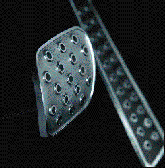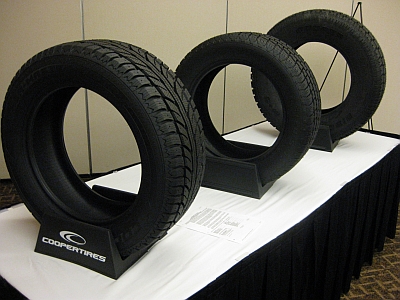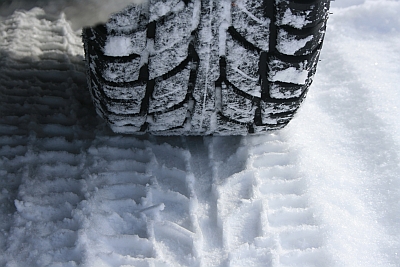CarTest! Expert car reviews and advice | home
CarTest! Expert car reviews and advice | CarTest Contents | New Car Reviews | Used Car Reviews | What is your car worth? | Automotive NewsBriefs | Award-Winning Models | Find the Best Vehicle | Automotive Advice | Save on Gas | Driving Tips & Maintenance Advice | Safety Research & Insurance Tips | Tire Advice | Road Trips | Auto Racing | Classics & Collectibles | Newsletter | About Us | SEARCH CarTest!

©CarTest.ca. All rights reserved.
2011 Cooper Weather-Master WSC review
Cooper Tires releases new Weather-Master WSC tires for winter testing
By James Roebuck
 The average consumer in North America, including myself, knows little about the tires they drive on every day. What exactly makes a performance tire perform or a quality tire better than others?
The average consumer in North America, including myself, knows little about the tires they drive on every day. What exactly makes a performance tire perform or a quality tire better than others? To help answer such questions in respect to winter tires, Cooper Tires of Findlay, OH, invited members of the media to the Smithers Winter Test Center in Sault St. Marie, MI, so that they could explain what they think makes a Cooper value-performance tire.
Cooper introduced its new Weather-Master WSC at the snow-covered Smithers Scientific facility in mid-February 2010. The WSC is an improvement on Cooper's previous-generation Weather-Master S/T2.
"What is unique about the WSC is the high-silica, low modulus tread compound," says Jeff Schroeder, segment manager of Cooper Tires.
Tire manufacturers around the world test different proportions of silica in rubber tires, attempting to reach the perfect balance of a high level of grip and a low rolling resistance, he says.
Before silica was introduced as a filler into tire manufacturing, carbon black was used. Silica is harder and tougher than carbon black, giving a tire better grip. Adding silica to a tire also increases its hardness and makes it less susceptible to deformation, which decreases its rolling resistance. Cooper's formula of high-silica for the WSC is designed to provide superior ice, slush and wet grip, even in extreme cold temperatures.
"The rubber and silica material is not the only factor that makes the WSC a superior tire," says Schroeder. "Cooper engineers have developed a tread design to maximize grip on snow, ice and wet surfaces, while reducing noise and improving rolling resistance."
 The WSC's features include a multi-angle positioning and high-density sipe design to enhance ice and wet traction capability, chamfered element points to improve wear and snow traction, unique circumferential snow-groove technology to enhance snow-on-snow grip capabilities, a solid centre rib to improve handling when changing lanes and cornering, and a directional tread design to improve snow acceleration and water evacuation.
The WSC's features include a multi-angle positioning and high-density sipe design to enhance ice and wet traction capability, chamfered element points to improve wear and snow traction, unique circumferential snow-groove technology to enhance snow-on-snow grip capabilities, a solid centre rib to improve handling when changing lanes and cornering, and a directional tread design to improve snow acceleration and water evacuation."The WSC has wide, lateral shoulder grooves which collect packed-in snow. This feature improves snow-on-snow traction because snow-on-snow provides better traction than snow-on-rubber," says Schroeder.
The WSC also includes half-worn indicators to provide an accurate view of tire wear. However, once the half-worn indicators appear in the tread, it is not necessarily time to discard the tires. Schroeder says these Cooper winter tires typically can be used for two or more winter seasons, depending on mileage, and then be used as all-season tires once the half-worn indicator has appeared.
While at the Smithers Facility, Cooper Tires gave the media a chance to test out its tires against leading competitors. The tires tested against the Cooper Weather-Master WSC winter tires were:
The winter tests all were done on snow-covered surfaces and included a short six-degree hill climb, a intricate race track with several twists and turns, two slalom courses, a narrow parabolic race track and an emergency stop test.
 The short hill climb tested the Cooper CS4 all season tires against the Nokian Hakkapeliitta 5's and the new Cooper WSC's. The test demonstrated the traction and handling ability while moving up a snow-covered incline and the braking ability and skid control at the top of the hill when the brakes were applied.
The short hill climb tested the Cooper CS4 all season tires against the Nokian Hakkapeliitta 5's and the new Cooper WSC's. The test demonstrated the traction and handling ability while moving up a snow-covered incline and the braking ability and skid control at the top of the hill when the brakes were applied. The two winter tires outperformed the Cooper CS4 all-season tires dramatically, which was expected. Meanwhile, the Cooper WSC's and the Nokian Hakkapeliitta 5's showed similar performance. Both had excellent traction moving up the incline and performed quite well stopping.
The race track was a similar story. The tight twists and turns were much more easily navigable in the Nokian Hakkapeliitta 5's and the WSC's than with the Cooper all-season tires. There was more front-end control, the rear end slipped out of line fewer times, and general acceleration and braking was executed with confidence. There was no noticeable performance difference between the Hakkapeliita 5's and the WSC's.
"We wanted to demonstrate the difference between our CS4 all-season tire and our WSC against the Hakkapeliitta 5's in winter conditions with these tests," explains Curt Selhorst, director, Tire Applications & Development, Cooper Tires. "The Nokian Hakkapeliitta 5 is one of the Cooper WSC's main competitors."
The next four tests were performed using Cooper ST2's, Cooper WSC's and Pirelli Scorpions. We performed the two slalom courses, one while travelling at 24 km/h (15 mph) and the other at 32 km/h (20 mph). This was followed by a narrow curve track and an emergency stop test while travelling at 80 km/h (50 mph).
When comparing the Cooper ST2's, Cooper WSC's and the Pirelli Scorpions, the Cooper tires easily outperformed the BMW's Pirelli OE tires in grip, handling and control. The slalom and narrow track were performed with great ease, control and confidence with the Cooper ST2's and Cooper WSC's.
The brake test at 80 km/h displayed the most significant difference among the three tires. The Pirelli Scorpions had an estimated additional stop distance of 4.5 metres (15 feet), and the stopping distance was around 2.5 metres (8 feet) longer for the Cooper ST2's, compared to the WSC's.
Although pricing information had not yet been released, Cooper representatives said the new tires would be priced competitively compared to the tire models we tested. The Cooper WSC's are manufactured in the United States. They will start shipment in August 2010, in time for the 2010-11 winter driving season. Cooper is looking at adding new size options to its 2011 product line in addition to those already planned (see size chart).
Cooper Weather-Master WSC available sizes
Sizes
|
265/65R17XL
|
205/50R17XL
|
235/55R17XL
|
235/60R18XL
|
235/55R18
|
245/60R18
|
265/60R18
|
215/55R18
|
235/65R18
|
235/50R18
|
James Roebuck is a Toronto writer.
Posted March 12, 2010. ©CarTest.ca.
Search CarTest!

Custom Search